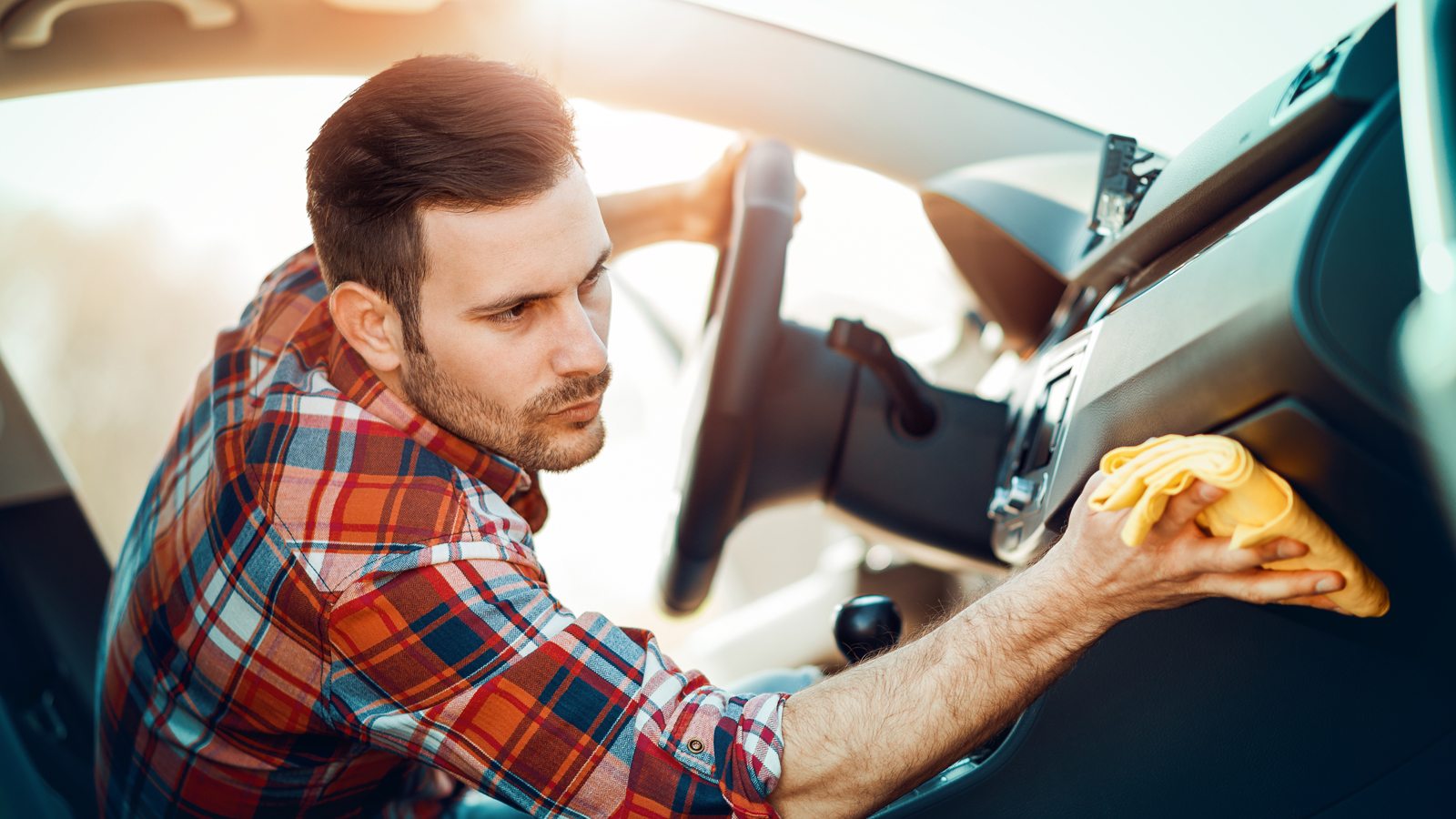“Interior and exterior cleaning of your vehicle should be an integral part of your maintenance routine,” says Patty Fehr of AMA Rewards partner Rocket’s Detail Deluxe in Red Deer. “In fact, regular exterior cleaning is one of the most important steps in maintaining a vehicle’s value.” Fehr shares her DIY tips to gear up for a new season—plus a few jobs you should leave to the pros.
STEP 1: THE INTERIOR
Clean from the top down. Dirt and debris will settle on the floor for quick vacuum pick-up.
Use a gentle foam-based fabric or carpet cleaner. It’s great for cleaning and removing stains on the interior top, as well as seats and carpets.
Wipe down all hard surfaces. Use a water-based, all-purpose cleaner and a clean microfiber cloth to scrub hard surfaces like door panels and console.
Avoid oil-based finishing products. They leave a greasy residue that attracts dust and dirt, and overuse can cause vinyl surfaces to crack.
Use an air compressor in tight spaces. A small compressor, like the kind used to clean electronics and keyboards, will quickly clear out vents and help restore that new car smell. Use in hard-to-reach spots like between seats as well.
Scrub floor mats. Remove mats from the vehicle. Give them a quick rinse with a garden hose. Using a sturdy-bristled utility brush, scrub the mats with all-purpose cleaner to remove any hardened mud and debris.
Vacuum floors and upholstery. After cleaning hard interior surfaces, use a handheld vac to suck up dust and dirt.
MORE TO READ
The dos and don’ts of washing your car
Wash all windows and mirrors. For a streak-free finish, use glass cleaner and extra-fine steel wool for stubborn water spots. Spray a generous amount of glass cleaner on window and wipe with steel wool in circular motions. Polish with a clean, dry microfiber cloth.
STEP 2: THE EXTERIOR
Avoid car-wash brushes. They can leave small scratches in the finish. Instead, opt for touchless or wand washes.
Mind the paint. Since paint is porous, dirt and debris can become trapped in the paint, making it appear dull over time. Use a microfiber cloth to hand wash and polish your ride without fear of scratching it.
Wash rims. To banish brake dust, look for a wheel cleaner specifically tailored to your type of rims: steel or aluminum. Don’t use an all-purpose cleaner as it could degrade the metal. Like paint, rims are prone to scratching, so clean with a soft-bristled wheel brush.
Scrub the tires. Unlike the rims, it’s safe to use an all-purpose cleaner to tidy up treads and rubber. Use a coarse-bristled brush to get rid of stuck-on debris.
MORE TO READ
Refresh your ride after winter’s harsh conditions
Wax on, wax off. Think of wax as sunscreen for your car: It prevents UV rays from fading paint and provides an extra layer of protection from things that land on it. Working in small sections, spray wax on surface, wipe off with a clean microfiber cloth and polish to a shiny finish. A good wax should typically last about six months.
STEP 3: SEE A PRO
Consider undercoating. Undercoating is a professional product applied to the undercarriage and wheel to seal out moisture and protect against road salt. It will help prevent rust from forming on your car’s high-impact areas.
Scratch removal. To fix scratches and restore that new car shine, invest in a professional power polish.
Look for “fall out.” White and light-coloured paints are prone to “fall out”—tiny reddish spots that resemble rust. They can eventually cause permanent rust that could penetrate through the paint. Fall out is easily removed with professional products at detailing shops.
No time to wax? Professional paint protection products will eliminate the need for waxing for several years and will also protect against UV damage.
